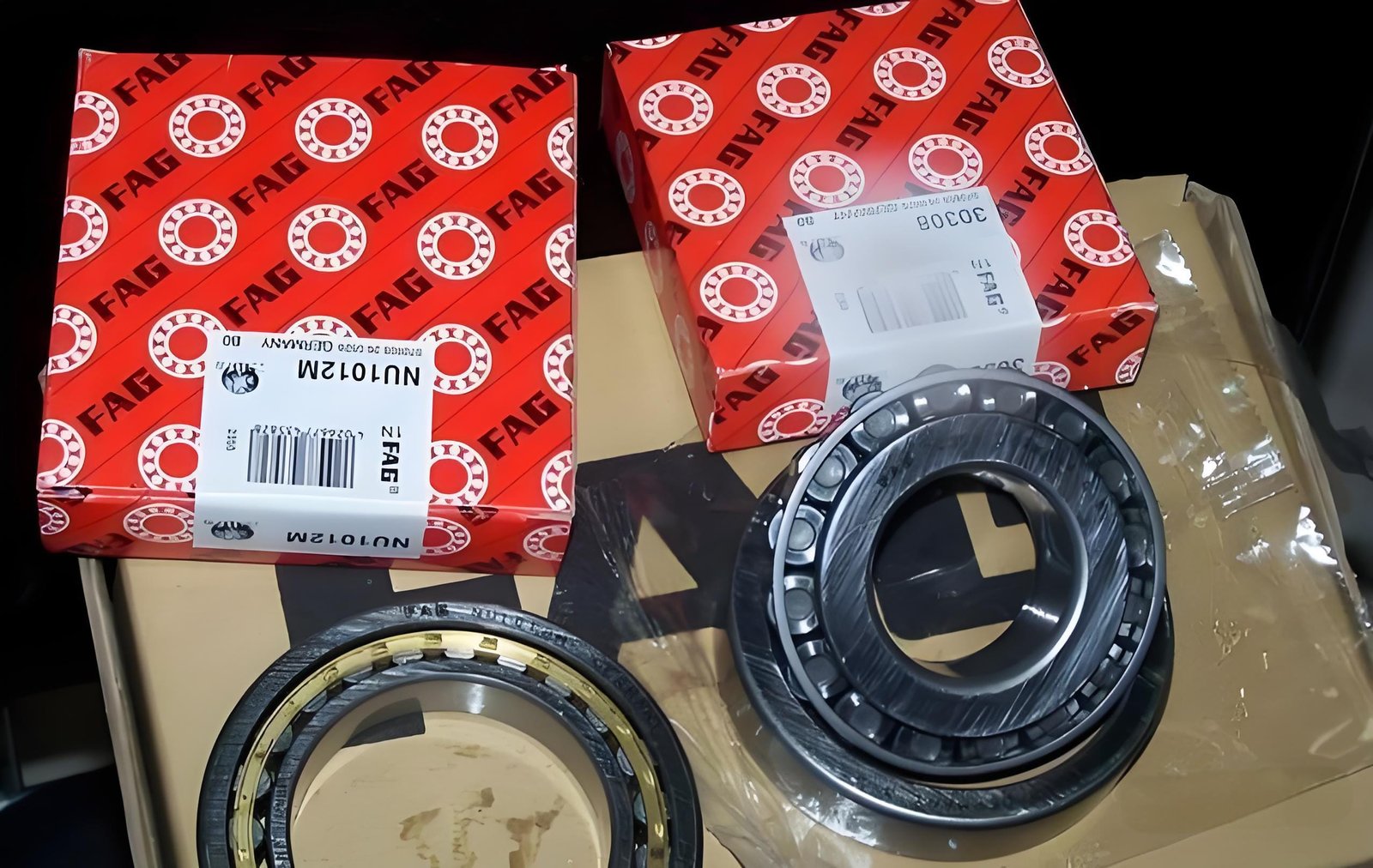Introduction to Bearings
Bearings are essential mechanical components that facilitate the smooth operation of machinery by reducing friction between moving parts. They support and guide the rotating shafts, arms, or other mechanical elements, maintaining their alignment and proper functioning. At its core, a bearing allows for relative motion between parts while minimizing resistance, which is crucial for enhancing efficiency and prolonging the lifespan of mechanical systems.
There are various types of bearings, and their selection is based on the specific requirements of the application. The most common types include radial bearings, which are widely used in rotating machinery, and thrust bearings, designed to handle axial loads. Among the different types, the Timken bearing is well-recognized for its high quality and reliability, making it a popular choice in various industries. Similarly, INA bearings provide excellent performance in demanding applications, further underscoring the diverse options available to engineers and technicians.
The primary role of bearings within mechanical systems is to support the load while allowing for controlled movement. By reducing friction, bearings facilitate smoother operation, which is vital for overall machinery efficiency. Whether it’s a fag bearing or an advanced roller bearing, each design caters to specific load requirements and environmental conditions. The correct application and choice of bearing not only enhance performance but also contribute to energy savings and reduced wear on other mechanical components.
In conclusion, bearings are fundamental elements in mechanical engineering that play a pivotal role in reducing friction and supporting loads. Their importance spans across various industries, making them indispensable for the efficient operation of machines. Understanding the different types of bearings, such as Timken and INA, is essential for selecting the right components to ensure optimal performance in any mechanical operation.
Types of Bearings
Bearings play an essential role in the efficiency and longevity of mechanical equipment by facilitating smooth motion between moving parts. Various types of bearings are frequently utilized across different applications, each designed with distinct characteristics, advantages, and uses. Among the most common types are ball bearings, roller bearings, and sleeve bearings.
Ball Bearings are perhaps the most recognized type. They consist of spheres that roll between two rings, allowing for smooth movement and the ability to support both radial and axial loads. Ball bearings are widely used in applications like electric motors and household appliances due to their versatility and the ability to operate at a variety of speeds. They are known for their low friction characteristics, which can significantly reduce energy loss in machinery.
Roller Bearings, in contrast, make use of cylindrical rollers instead of balls to maintain separation between moving parts. This design allows for higher radial load capacities compared to ball bearings, making them more suitable for heavy-duty applications, such as in construction or mining equipment. Additionally, roller bearings are characterized by their ability to handle shock loads and vibrations, further enhancing their applicability in rugged environments.
Sleeve Bearings, also known as plain bearings, operate through a sliding motion rather than rolling. These are simpler in design and tend to have fewer moving parts. Commonly found in applications where speed is not a primary concern, sleeve bearings are often employed in applications like fans and pumps. They can offer excellent load-carrying capacities and are particularly ideal for environments where contaminants may interfere with more complex bearing systems.
Each type of bearing, whether it be fag bearing, Timken bearing, or INA bearing, serves distinct purposes and is employed based on the specific operational needs and constraints of machinery. Ultimately, choosing the right bearing type can significantly influence machine performance and durability.
The Importance of Bearing Selection
When it comes to the efficient operation of mechanical equipment, selecting the appropriate bearing is paramount. The performance and longevity of components such as timken bearings, ina bearings, and fag bearings significantly depend on the specific operational requirements they will face. One of the primary criteria for bearing selection is load capacity. Bearings must be able to support the loads they will encounter during operation, whether those are axial, radial, or a combination of both. If an insufficiently rated bearing is employed, it can result in premature failure and potentially catastrophic breakdowns, leading to costly repairs and downtime.
Another critical factor is the speed at which the bearing will operate. Different bearing types are designed for optimal performance at varying speeds. For instance, timken bearings may excel in high-speed applications, while other variants may be better suited for lower-speed operations. Selecting a bearing that is not tailored to the expected operational speed can lead to excessive heat generation and increased wear, thus shortening its service life.
Environmental conditions also play a significant role in bearing selection. Factors such as temperature, humidity, and exposure to contaminants should influence the decision-making process. For example, ina bearings might be more appropriate in environments with high moisture levels, while specialized coatings on fag bearings may protect them from corrosive chemicals. Failure to consider these conditions can lead to decreased performance and reliability, as well as increased maintenance and replacement costs.
Overall, the implications of poor bearing selection can be detrimental, affecting not only the bearing itself but also the efficiency and effectiveness of the entire mechanical system. Therefore, careful assessment of load requirements, operational speeds, and environmental factors is essential for optimal bearing selection.
Bearings and Load Distribution
Bearings play a pivotal role in the effective load distribution of mechanical systems, ensuring the seamless operation of various machinery. The primary function of a bearing is to support and facilitate the smooth rotation or movement of components, thereby minimizing friction between moving parts. Timken bearings, INA bearings, and other similar components are designed to handle different load types, including axial and radial loads, which are critical for optimal performance.
Axial loads are forces that act parallel to the axis of the bearing. These types of loads are commonly encountered in applications where the direction of the force changes continually. In contrast, radial loads are those that exert force perpendicular to the axis of the bearing and are prevalent in rotating equipment. Bearings are engineered to accommodate these loads through various designs and material compositions, allowing for effective weight distribution and enhancing machine stability.
When properly selected and installed, bearings ensure that loads are distributed evenly across their surfaces. This distribution is crucial because it reduces wear and tear on components, decreases the likelihood of mechanical failure, and prolongs the lifespan of equipment. For instance, a high-quality fag bearing can significantly improve the load-bearing capacity and performance of a mechanical system when compared to inferior alternatives. Moreover, the choice of bearing also influences how vibrations and shocks are absorbed during operation, thereby enhancing overall equipment reliability.
The importance of selecting the appropriate bearing type cannot be overstated, as it can greatly affect the efficiency and functionality of machinery. The interplay between load distribution and bearing design highlights the role these components play in the successful operation of mechanical systems. From minimizing friction to supporting substantial loads, bearings are essential for maintaining the stability and performance of any equipment in which they are employed.
Friction Reduction and Efficiency
Bearings play a pivotal role in the functionality and performance of mechanical systems by significantly reducing friction between moving components. This reduction is essential for the smooth operation of machinery, where various parts need to move in tandem without excessive resistance. Fag bearing, Timken bearing, and INA bearing are popular choices in the market, each designed to minimize friction effectively and enhance operational efficiency.
When friction is reduced, the wear and tear on mechanical components is also minimized, which directly impacts the longevity of the equipment. High-friction scenarios can lead to rapid degradation of parts, resulting in increased maintenance costs and potential downtime. Choosing the right bearing, such as those produced by Fag, Timken, or INA, ensures that machinery operates at optimal levels while extending the life expectancy of its components. The accurate selection of bearings can therefore lead to significant savings over time, both in terms of repairs and replacements.
Furthermore, an efficient bearing contributes to energy savings. As friction increases, machinery requires more power to achieve the same level of performance, ultimately leading to higher energy consumption. Incorporating high-quality bearings minimizes energy losses, facilitating smoother operations and allowing machines to run with lower energy demands. This efficiency is critical, especially in industries striving to improve sustainability by reducing energy footprints.
Therefore, the relationship between bearings and friction is essential for achieving optimal performance in mechanical equipment. By selecting appropriate bearings such as Timken, INA, or Fag bearings, engineers can ensure reduced friction, prolonged equipment lifespan, and improved energy efficiency, supporting the overall reliability and effectiveness of their machinery.
Common Applications of Bearings
Bearings play a vital role in numerous industries by facilitating smooth motion and reducing friction in mechanical systems. In the automotive sector, for instance, fag bearings are extensively used in engines, transmissions, and wheel assemblies. These components are essential for ensuring that vehicles operate efficiently and reliably, allowing for smoother rides and better fuel efficiency. Timken bearings are often preferred in this industry due to their durability and ability to withstand harsh conditions.
Aerospace is another industry heavily reliant on bearings. The precision required in aircraft systems necessitates the use of high-quality components. INA bearings, known for their high precision and performance, are often utilized in various applications, including in landing gear, flaps, and engines. The performance and safety of an aircraft depend significantly on the reliability of its bearings, as they ensure the proper functioning of critical systems throughout flight operations.
In the manufacturing sector, bearings are indispensable in machinery such as conveyor belts, robotic arms, and motors. The use of fag bearings in these applications enhances operational efficiency by providing superior load capacity and minimizing mechanical wear. Furthermore, Timken bearings are renowned for their versatility and are used in diverse machines, ranging from simple tools to complex assembly lines. Their role in reducing downtime and maintenance costs cannot be overstated.
Home appliances, including washing machines, refrigerators, and electric fans, also incorporate bearings to improve functionality and extend lifespan. Here, INA bearings help reduce noise and vibration, contributing to a more pleasant user experience. Their application across various domestic products illustrates the importance of bearings in everyday life, demonstrating how these small yet essential components enhance the performance and reliability of household items.
Maintenance and Care of Bearings
To ensure the optimal performance and longevity of bearings in mechanical equipment, proper maintenance and care are essential. Both fag bearing and timken bearing, known for their high performance, require a systematic approach to upkeep. Establishing a maintenance schedule is the first step; regular inspections should be carried out to identify potential issues before they escalate. A well-defined schedule includes checking for signs of wear, ensuring that all components operate smoothly, and monitoring the operating environment to prevent contamination.
Lubrication is another critical factor in maintaining bearing efficiency. The choice of lubricant varies depending on the type of bearing, whether it is an ina bearing or another variant. Selecting the appropriate lubricant helps reduce friction and heat generation, thus prolonging the life of the bearing. Regularly checking and replenishing the lubricant ensures that the bearing remains in optimal condition. Additionally, applying lubricant in the correct manner is important; both over-lubrication and under-lubrication can lead to bearing failure. The frequency of lubrication should align with the manufacturer’s recommendations and the specific application’s demands.
It is also vital to be vigilant for any signs of wear or damage. Common indicators include unusual noise, vibration, overheating, and fluid leakage around the bearing area. Timely identification of these symptoms can avert complete bearing failure, preventing costly downtime and repairs. Inspecting the mountings and seals surrounding the bearings is equally important, as these components play a significant role in protecting the bearing from external contaminants.
In conclusion, the maintenance and care of bearings, such as fag bearing, timken bearing, and ina bearing, serve as the backbone of mechanical equipment operations. By adhering to regular maintenance schedules, utilizing appropriate lubrication techniques, and remaining attentive to signs of wear, one can ensure the longevity and reliability of these crucial components.
The Future of Bearings in Engineering
The landscape of bearing technology is undergoing significant transformation, propelled by innovations in design and material science. As industries continue to strive for enhanced efficiency and performance, the incorporation of advanced technologies in bearings, such as smart bearings, holds substantial promise. Smart bearing systems—equipped with sensors and IoT capabilities—allow for real-time monitoring of performance metrics. This capability enables predictive maintenance, reducing downtime and extending the lifespan of critical components such as the Timken bearing and INA bearing, vital for efficient machinery operations.
Furthermore, the utilization of self-lubricating materials represents another breakthrough in bearing development. These materials minimize the need for external lubrication, which is not only beneficial in terms of maintenance reduction but also enhances the reliability of equipment by preventing lubricant contamination. This advancement suits a wide range of applications, from heavy industrial machines to more precise equipment where clean operation is paramount. The decreasing reliance on external lubricants benefits systems equipped with fag bearings, which are often employed in high-load applications.
As the demand for sustainability grows, there is a pronounced shift toward the use of eco-friendly materials in bearing production. Manufacturers are researching and developing bio-based lubricants and recyclable materials to reduce the overall environmental impact of bearing manufacturing and usage. Such initiatives can dramatically influence the lifecycle of products using bearings, as they minimize waste and enhance product recovery. The integration of these sustainable practices into products such as the Timken bearing or INA bearing reflects a broader trend toward responsible engineering.
In conclusion, the future of bearings in engineering is marked by innovation and sustainability. With the potential for smart technologies and self-lubricating materials, the efficiency and reliability of mechanical operations are set to improve significantly. As the industry evolves, staying informed about these advancements will remain essential for engineers and manufacturers alike.
Conclusion
Bearings are an integral component in the operation of mechanical equipment, serving as essential elements that facilitate the smooth functioning of machinery. From manufacturing to automotive applications, bearings, including fag bearing, timken bearing, and ina bearing, are critical in reducing friction and wear between moving parts. This not only enhances the efficiency of machines but also extends their lifespan, ultimately leading to cost savings and improved productivity in various industries.
The role that bearings play cannot be understated. They are designed to support loads, allowing for the rotation of shafts and the smooth movement of components within machinery. Through advanced engineering and technology, modern bearings accommodate greater speeds and loads while maintaining reliability under diverse operating conditions. Fag bearing, timken bearing, and ina bearing represent some of the leading brands that emphasize precision and durability, ensuring that equipment performs optimally.
It is essential for professionals across industries to recognize the significance of selecting the right type of bearing for their specific applications. Understanding the unique characteristics and advantages of different bearing types can contribute to improved operational efficiency and reduced downtime. Regular maintenance of bearings is also vital, as it can prevent premature failure and minimize repair costs.
In conclusion, the value of bearings extends beyond mere mechanical functions; they are key to enabling the performance and reliability of a wide array of machines. By appreciating the vital role of bearings, such as those from reputable manufacturers like fag, timken, and ina, individuals can make informed decisions that will enhance the operational effectiveness of their equipment. This understanding is crucial for sustaining productivity and ensuring the smooth operation of mechanical systems in any field.


 SKF Bearing
SKF Bearing NSK Bearing
NSK Bearing FAG Bearing
FAG Bearing TIMKEN Bearing
TIMKEN Bearing INA Bearing
INA Bearing NTN Bearing
NTN Bearing KOYO Bearing
KOYO Bearing NACHI Bearing
NACHI Bearing